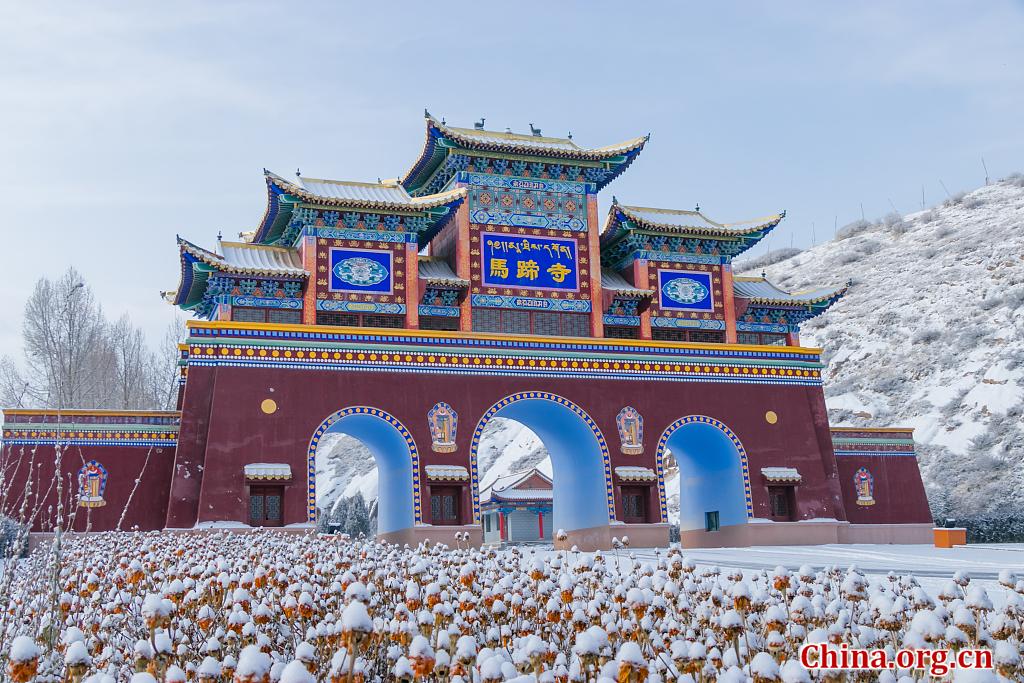Cave treasures saved
 0 Comment(s)
0 Comment(s) Print
Print E-mail China Daily, December 1, 2022
E-mail China Daily, December 1, 2022

Mati Temple complex finalizes digitization project to preserve and research grottoes.
A digitization project of the Mati Temple Grottoes in Zhangye, Northwest China's Gansu province, that aims at high-fidelity preservation of its grottoes was completed recently, according to the city's cultural relics preservation office.
Launched in June last year, the project, with a subsidy of 3.89 million yuan ($545,000) from the central government, was set up to collect digital information of the temple's surroundings, scan the murals in the grottoes, make 3D reconstruction of the painted sculptures and caves, as well as a panoramic roaming system.
It provides a new approach for preservation and research of the grottoes that were built on red sandstone at an altitude of about 2,500 meters, with the risk of weathering and efflorescence.
Zhang Zhiyong, director of the administration office of Zhangye's cultural relics preservation and research institute, says the data collection and processing work was over in August. Quality testing will be carried out when the pandemic situation turns better.
For 1,600 years, the Mati Temple has been holding its grotto grandeur inside bare cliffs that are almost vertical and some dozens of meters above land. The land around is lush though. The cliffs are part of the Qilian Mountains that have several peaks exceeding 5,000 meters above sea level in the province's Sunan Yugur autonomous county.
A drive to the grottoes is a climbing adventure to view the abundance of nature, from trees and bushes to grassland pastures and snow-capped peaks.
It was in such complex surroundings that ancient Chinese built the Mati Temple Grottoes on the Hexi Corridor, an artery of the ancient Silk Road, which shares the high aesthetic value of grotto art with the province's Yulin Caves, although less well-known than the latter site.
First built in the Eastern Jin Dynasty (317-420), the Mati Temple complex consists of seven Buddhist temples and over 70 caves with more than 500 painted sculptures and murals that span around 1,200 square meters.
As one of the earliest excavated Chinese grotto sites, it gave important clues on how Buddhist grotto art was localized and later cast its influence on the Yungang and Longmen grottoes, respectively in Shanxi and Henan provinces.
In its heyday, there were more than 300 monks living around the Mati Temple. Today, there are around 500 remaining stupas from the Yuan (1271-1368) and Ming (1368-1644) dynasties nearby.
The complex was originally a Han Buddhist spot before Tibetan Buddhist traditions were introduced there in the Yuan Dynasty. The two schools coexist until today, despite dynasty alternation and power shifts of ethnic regimes in ancient Chinese feudal society.
"These Buddhist relics are of great significance to demonstrate the formation process of the pluralistic unity of the Chinese nation," Zhang says.
For two decades, experts have been restoring the sculptures and murals, reinforcing the rock structures and improving anti-seepage facilities. The focus of the preservation has turned from rescue to prevention of unexpected damages, from protection of the relics to also the surrounding area.
With the digitized protection program, virtual exhibitions online and public archaeological activities can be expected, apart from obtaining accurate, reliable images and data of the grottoes, Zhang says.
Since last year, his institute and the Chinese Academy of Social Sciences' Institute of Archaeology have been working together on a program to look into the Jinta Temple grottoes, as part of the Mati Temple complex, and a comprehensive, systematic research report will be published next year.
The report will be the first of its kind to introduce detailed information on the grottoes of the Jinta Temple.
With over 200 sculptures and a number of murals of different dynasties, it is known to have kept the only domestic hanging sculptures of flying apsaras, spiritual beings in Hindu and Buddhist mythologies that take the form of beautiful females. They were built 300 years earlier than flying apsaras murals of the Dunhuang frescoes, according to local media.






Go to Forum >>0 Comment(s)